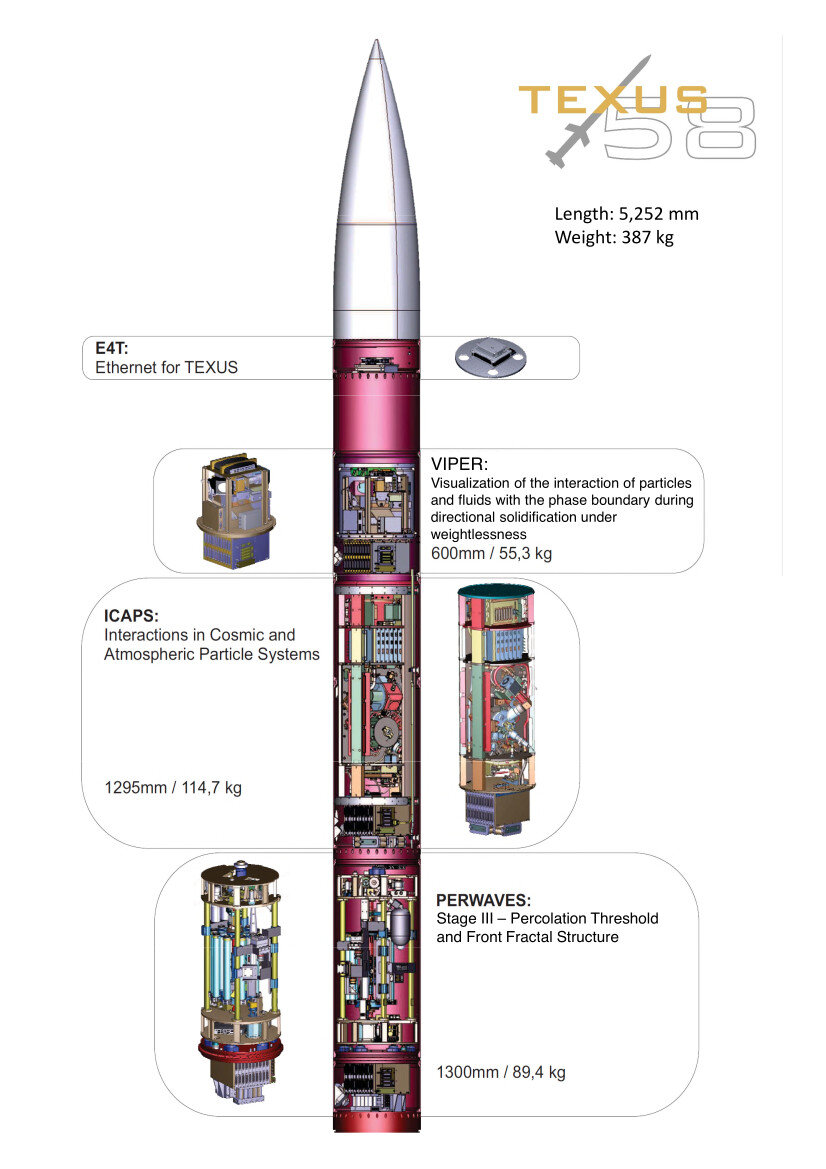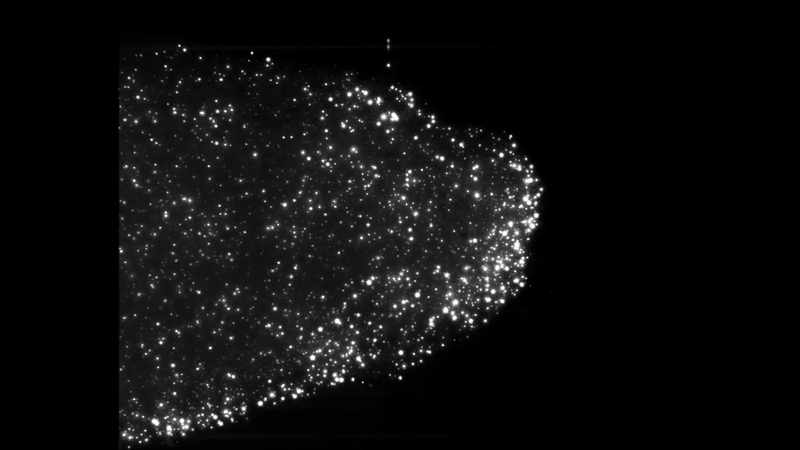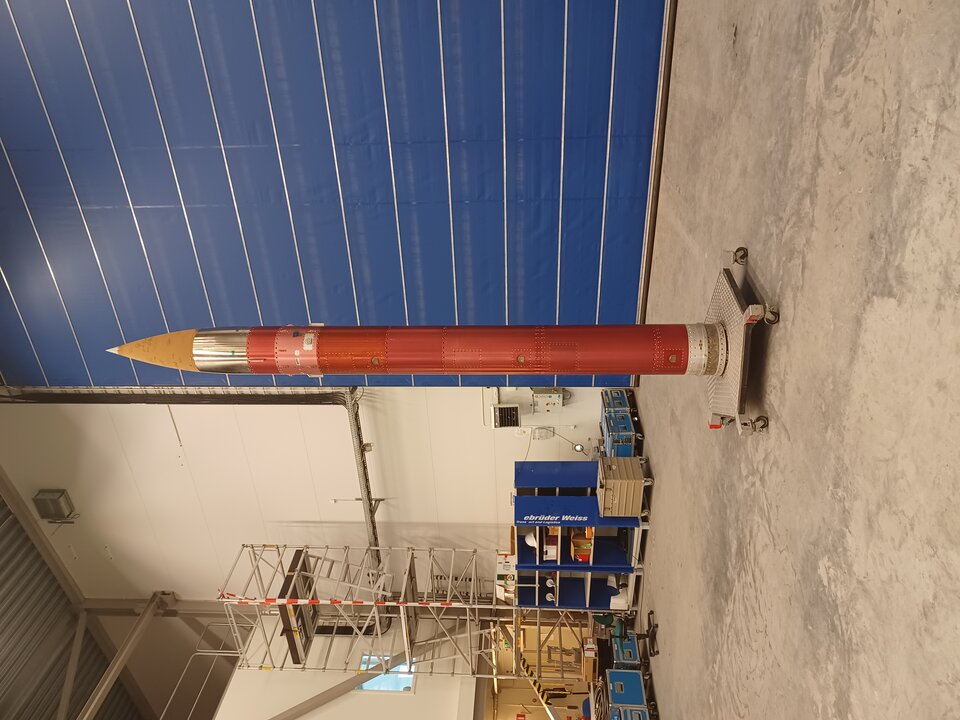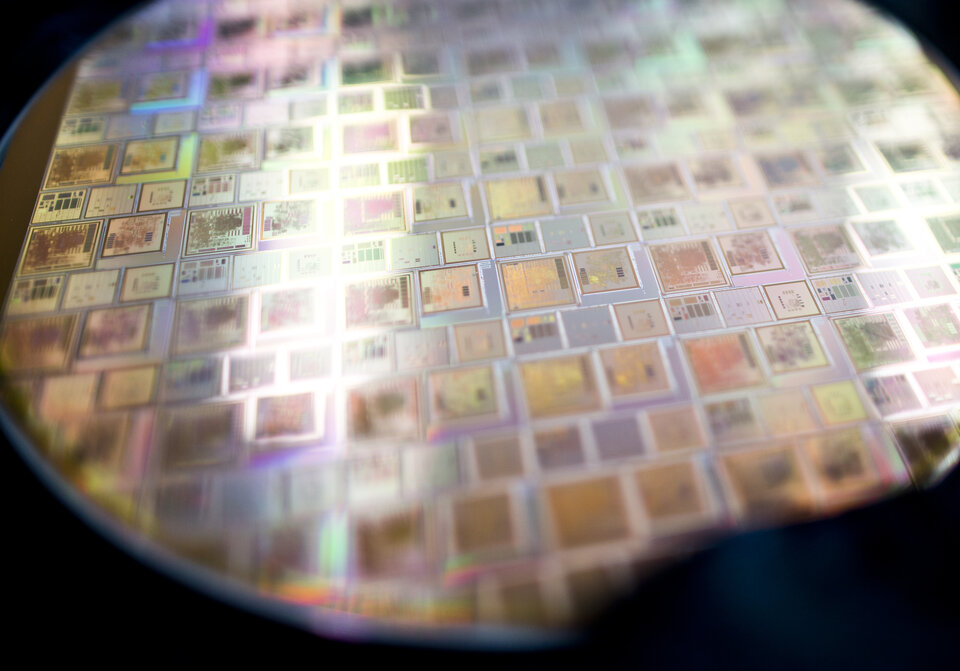Not one, but two rocket launches, with ESA-led experiments, are flying to the edge of space just a week apart, providing unique data to researchers eager to learn more about fundamental physics, semiconductor production, the formation of planets and how our immune cells react to spaceflight.
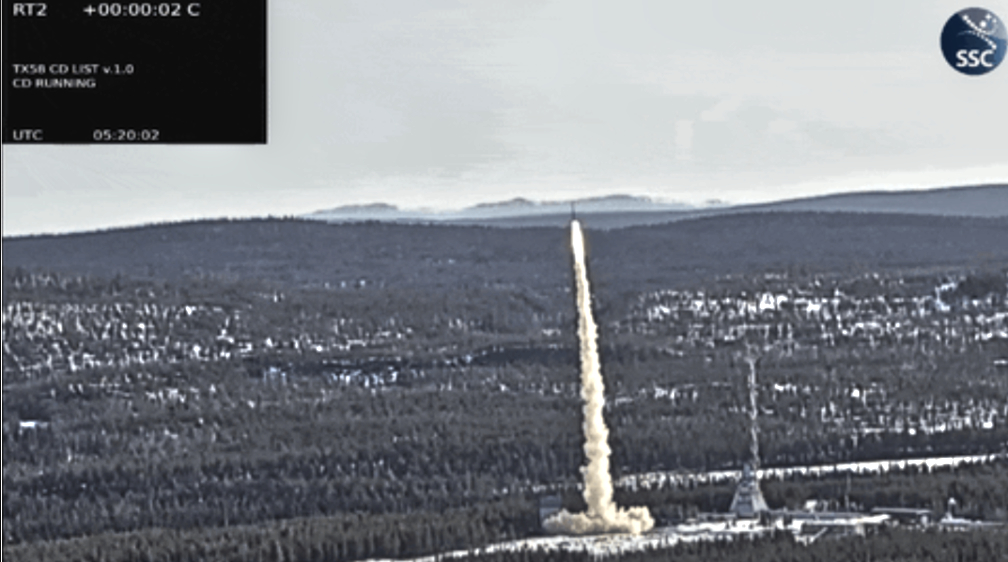
A Texus sounding rocket can propel up to 270 km altitude to return to Earth in an elongated arc. As it falls freely, the experiments inside experience weightlessness – six minutes of valuable research time each for these flights, to then land softly on the tundra near the Esrange launch facility in Sweden.
Viper, planets + iron fuel
The first rocket, Texus-58, launched on April 25th at 07:20 CEST with three ESA-led experiments, all linked with previous research.
The VIPer experiment investigates the interaction between free-floating particles and growing crystals. Several industrial processes, such as growing crystals for solar cells, suffer from an unavoidable amount of dirt, or what scientists call foreign phase particles. This research could improve the quality of the crystalline material.
To analyze what is happening scientists removed gravity from the equation. Silicon is not transparent, so any crystal formation is hard to judge. The VIPer experiment uses water as an analogy for growth processes in industry.
“The idea is a very basic one, but that often makes the experiment very complicated.” — Wim Sillekens, ESA’s materials science lead for Human and Robotic Exploration
In just six minutes the beads were injected and the water frozen, all while being recorded and travelling at supersonic speeds.
A second study tries to simulate the first stages of planet formation. It takes thousands of years for dust particles to grow into centimeter-sized clouds in protoplanetary disks. To shorten the timescale, the ICAPS experiment increases the concentration of dust particles and observes their growth within a few minutes using a microscope.
The experiment flew on the sounding rocket for the second time, equipped with a new instrument to observe how the light scattered.
This launch included a continuation of the Perwaves experiment that studies how flames propagate through clouds of iron particles in oxygen and xenon gas. Without the effect of gravity to disrupt the suspensions in glass tubes, the iron flame shows unique behaviors, slowly carving its path through the mixture by jumping from particle to particle instead of burning fuel continuously.
A unique 3D reconstruction of the flames will allow the researchers to better understand how they and a whole family of waves behave. The data is also important to chart the way for a carbon-free fuel of the future: iron dust. Burn iron dust and you get rust – and a lot of energy. Data from Perwaves can allow engineers to design better burners to extract that energy.
T-Rex on a rocket + double data safari
On May 1st, the Texus 59 rocket launch with two ESA experiments sharing the ride with another investigation on flame propagation, called Topoflame, from the German Aerospace Center.
ESA’s T-REX experiment is an abbreviation for T-cell gene regulation experiment and it will look at how the gene expression system in immune cells responds to the sounding rocket flight.
Previous experiments showed that it takes just 20 seconds for cells to react to weightlessness. The research team wants to understand how gravity is encoded in our genome.
This flight was a repetition of previous flight on a sounding rocket in 2015. The difference lies on an integrated and far-reaching analysis. The series are part of a larger effort to understand the process, and it includes experiments on the International Space Station.
The second ESA experiment is called SaFari and investigates crystal growth in semiconductors. An eight-millimeter silicon crystal will be partly molten and re-crystallized after cooling down.
Silicon doesn’t melt easily – a furnace will heat the material above 1400°C within a few seconds. Scientists will analyze the inner part of the crystal. The outcome after the six-minute flight will lead to a better understanding of the causes of crystal defects in semiconductors for technological applications.
“These semiconductor experiments will help create better computer chips and solar panels, as we understand the process to make them better.” — Wim Silleke
Article is courtesy of ESA.

